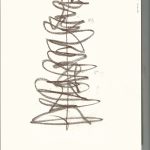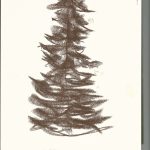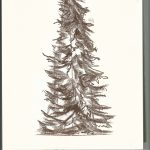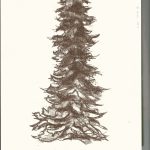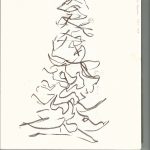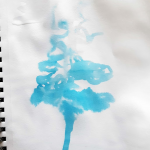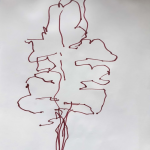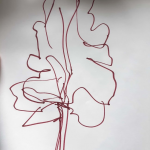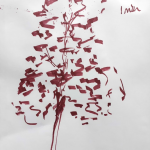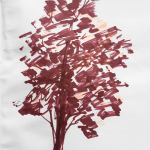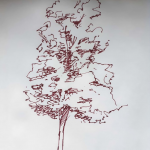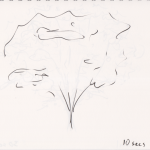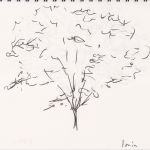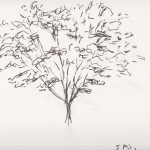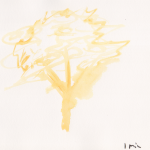introduction
This exercise introduces the concept of “de-skilling”, which is a technique that removes our ability to draw accurately. Here, we will be using water, an elongated handle, and restrictive time limits to de-skill our drawing method. De-skilling encourages a critical observation of the subject’s form; we are forced to experiment with the most efficient way of communicating our subject, whether through its texture, shadow, outline, etc. Rarely will the resulting drawing be accurate, however by releasing accuracy as the primary goal of a drawing, we can begin to appreciate the unexpected and delightful qualities of inaccurate drawing: surprisingly efficient communication, affect, emotion, texture, weight, gestalt principles, and so on. Refocusing our attention on drawing effectively, rather than accurately, allows us to draw quickly and efficiently – an imperative skill for idea generation and ideation in design.
Desired outcomes: accuracy, confidence, efficiency, intuition
Methods: de-skilling, emotive drawing
materials
- Media 1: Soft media (one colour) – something that isn’t too fine and that responds well to pressure. Charcoal, conte, ink, watercolour, willow charcoal, brush-tip pen, and marker all work well
- Media 2: Water-soluble media such as watercolours or ink, and all necessary equipment (water, brushes, etc.)
- Note: Media 1 may be dry or wet, but Media 2 must be wet.
- 8 sheets of letter-sized paper (or larger). At least one sheet should be thick enough to hold wet media. If your Media 1 is wet, all sheets should accommodate water.
instructions
- This exercise takes place outdoors looking at a tree in situ. Notice its weight, texture, light/shadow, hardness/softness, and movement.
- Sheet 1: Draw the tree using Media 1 with a time limit of 5 minutes.
- Sheet 2: Draw the tree using Media 1 with a time limit of 1 minutes.
- Sheet 3: Draw the tree using Media 1 with a time limit of 30 seconds.
- Sheet 4: Draw the tree using Media 1 with a time limit of 10 seconds.
- Sheet 5: With a time limit of 30 seconds, draw the tree using Media 1 while holding the very tip of the drawing utensil, with your arm outstretched. If the utensil is short, tape it to a longer stick. The drawing utensil should be difficult to control.
- Sheet 6: Apply a moderate wash of water to the paper (your thicker paper, if applicable). With a time limit of 1 minute, draw the tree using Media 2, allowing the media to run and bleed in the water.
- Sheet 7: Apply a moderate wash of water to the paper (your thicker paper, if applicable). With a time limit of 30 seconds, draw the tree using Media 2, allowing the media to run and bleed in the water.
- Sheet 8: Draw the tree using Media 1 with a time limit of 5 minutes.
reflection questions
- What application might de-skilling have in your everyday design practice?
- How did de-skilling by limiting time, holding the end of your utensil, and bleeding your media affect the way you looked at your subject?
- How did it affect the way you went about representing your subject?
- After de-skilling, you were asked to return to your original media and original time limit for a final “re-skilled” drawing. Did you approach this drawing differently than you did drawing #1?
- Which drawing do you think was the most “successful” (on your own terms) and why?
